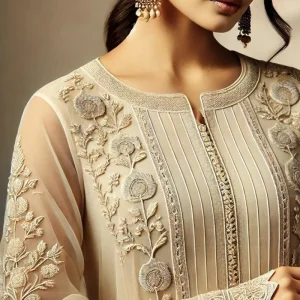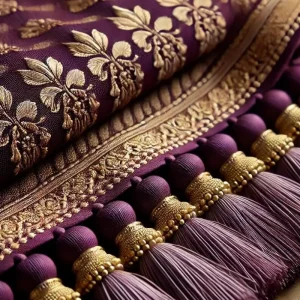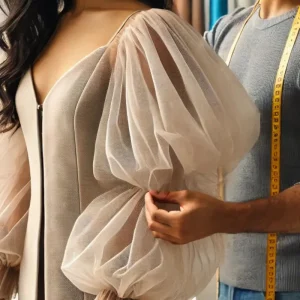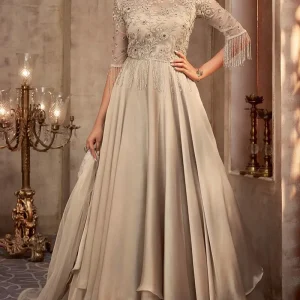No products in the cart.
Shoulder & Armhole Adjustment for Men’s Clothes
From ₹199.00
Choose any of the below options tailored to your occasion.
Description
Shoulder and armhole adjustments are key to ensuring that Indian men’s garments fit well, providing both comfort and a sharp, tailored look. These adjustments are essential for garments such as kurta, sherwani, bandhgala, Nehrus, shirts, blazers, and jackets. The shoulder and armhole area plays a vital role in how the garment fits on the body, affecting both movement and the overall silhouette. Here are some important pointers for making shoulder and armhole adjustments in Indian men’s garments:
1. Shoulder Adjustments for Indian Men’s Garments:
Tight Shoulders:
- Signs of Tight Shoulders: When the shoulders of a garment feel too tight, it can cause discomfort, restrict movement, or result in pulling at the seams, particularly around the upper chest and arms. The fabric may also wrinkle or bunch up at the shoulders.
- How to Adjust: To relieve tightness in the shoulder area, a tailor can loosen the shoulder seams. This involves unpicking the shoulder seam, adding extra fabric (if there is enough seam allowance), or shifting the shoulder seam slightly to a more comfortable position.
- Adjusting for Broader Shoulders: If the shoulders feel too tight because of the wearer’s body shape (e.g., broad shoulders), the tailor may widen the shoulder area to ensure a more relaxed fit. This adjustment is especially important in formal wear like bandhgala jackets or suits, where the shoulders need to sit well and not feel constricted.
Wide Shoulders:
- Signs of Wide Shoulders: If the shoulder seams are too wide, the garment may look boxy or unshaped, which can disrupt the garment’s overall structure, especially in formal wear.
- How to Adjust: To create a more tailored look, a tailor can narrow the shoulders by taking in the shoulder seams. This will create a more structured, sharp silhouette, especially in garments like sherwanis, blazers, or Nehru jackets.
- Adjusting for Narrow Shoulders: If the shoulders are too narrow or the shoulder seam falls off the natural shoulder line, a tailor can widen the shoulder seams slightly by either extending the shoulder line or adding fabric (if there’s extra seam allowance).
Sloping Shoulders:
- Signs of Sloping Shoulders: People with sloping shoulders often experience garments sliding off their shoulders or feeling loose at the neck and upper chest area.
- How to Adjust: For a more comfortable fit, a tailor can reshape the shoulder line to follow the natural slope of the shoulders. This involves altering the shoulder seam and potentially adjusting the armhole to sit better on the shoulder, ensuring that the garment stays in place and looks well-fitted.
2. Armhole Adjustments for Indian Men’s Garments:
Tight Armholes:
- Signs of Tight Armholes: A tight armhole can be uncomfortable, especially when raising the arms, and can cause the garment to pull, restrict movement, or cause creases around the armpit. It can be particularly noticeable in kurta, sherwani, and bandhgala designs where comfort and mobility are key.
- How to Adjust: To relieve tightness, a tailor can lower the armhole slightly by adjusting the side seams and reshaping the armhole. This provides more room around the shoulder and chest area, making it easier to move. In some cases, the sleeve head may need to be reshaped to complement the armhole adjustment.
Loose or Gaping Armholes:
- Signs of Loose Armholes: If the armhole is too loose or gapes, the garment may look oversized and ill-fitting, and fabric may bunch or fold around the arm. This issue is often seen in formal kurtas or sherwanis.
- How to Adjust: A tailor can take in the armhole to reduce excess fabric by adjusting the side seams or re-stitching the armhole to fit more snugly. For loose armholes, the side seams may need to be taken in and the shoulder seam adjusted to avoid any gaps or loose fabric around the arms.
Shaping the Armhole:
- Signs of Poor Armhole Shape: Sometimes, armholes may not be symmetrical or well-shaped, making the garment look bulky or poorly fitted. This is common in bandhgala jackets, suits, or formal kurtas.
- How to Adjust: A tailor will reshape the armhole to follow the natural curve of the arm, ensuring a smooth and flattering fit. The armhole should not be too deep or too shallow; it needs to match the wearer’s body proportions while ensuring ease of movement.
Armhole Depth:
- Signs of Incorrect Armhole Depth: An armhole that’s too deep may make the garment look baggy or cause it to fall off the shoulder, while an armhole that’s too shallow can restrict movement, creating tightness or pulling at the armpits.
- How to Adjust: A tailor can adjust the depth of the armhole to suit the wearer’s proportions, either by lowering the armhole for a looser fit or raising it to create a more structured look. This is particularly important for formal jackets or sherwanis, where the fit needs to be both comfortable and stylish.
3. Specific Garments and Shoulder/Armhole Adjustments:
Kurta:
- Shoulder Adjustment: For traditional kurtas, the shoulder seam should sit directly on the shoulder. If it’s too tight or too wide, a tailor can adjust the shoulder seams to ensure the correct alignment.
- Armhole Adjustment: The armhole in kurtas should be roomy enough for easy movement but not so loose that it creates excess fabric. If the armhole is too tight, it can be lowered slightly for a more comfortable fit.
Sherwani:
- Shoulder Adjustment: Sherwanis typically have structured shoulders, so it’s important to ensure that the shoulder seams align with the natural shoulder line. If the shoulders feel too tight, they can be loosened, and if too wide, the shoulder seams can be narrowed for a sharper look.
- Armhole Adjustment: Sherwanis should have slightly deeper armholes for ease of movement. If the armhole is too tight, it should be loosened to ensure comfort without compromising the garment’s tailored fit.
Bandhgala / Nehru Jacket:
- Shoulder Adjustment: Bandhgala and Nehru jackets often require precise shoulder adjustments for a sharp, fitted look. If the shoulders are too wide, the jacket may look boxy. A tailor can narrow the shoulders to create a more streamlined silhouette.
- Armhole Adjustment: The armholes of bandhgala jackets are typically more structured. If they are too tight, they can be lowered slightly, and if too loose, the armholes can be taken in for a more snug fit.
Suits and Blazers:
- Shoulder Adjustment: The shoulder fit is one of the most important aspects of suits and blazers. The shoulder seams should align with the natural shoulder line. If they are too tight or too wide, the suit will lose its sharp look. Adjustments may involve narrowing or widening the shoulder to achieve a well-fitted appearance.
- Armhole Adjustment: Armholes in blazers or suits should be shaped to allow free movement without gaping or pulling. If the armholes are too tight, they can be lowered, or if too loose, they can be taken in for a more tailored fit.
4. General Tips for Shoulder and Armhole Adjustments:
- Seam Allowance: Always check for enough seam allowance before making adjustments. If there’s not enough extra fabric, it may not be possible to adjust the shoulder or armhole significantly.
- Fitting and Mobility: While adjusting the shoulder and armhole, it’s essential to balance a fitted look with comfort. The shoulder should be sharp but not restrictive, and the armhole should allow for free movement without excessive looseness.
- Consider the Fabric: Different fabrics will behave differently when altered. Stiff fabrics like wool may require more precise shaping, while softer fabrics like cotton may allow for more flexibility in adjustment.






